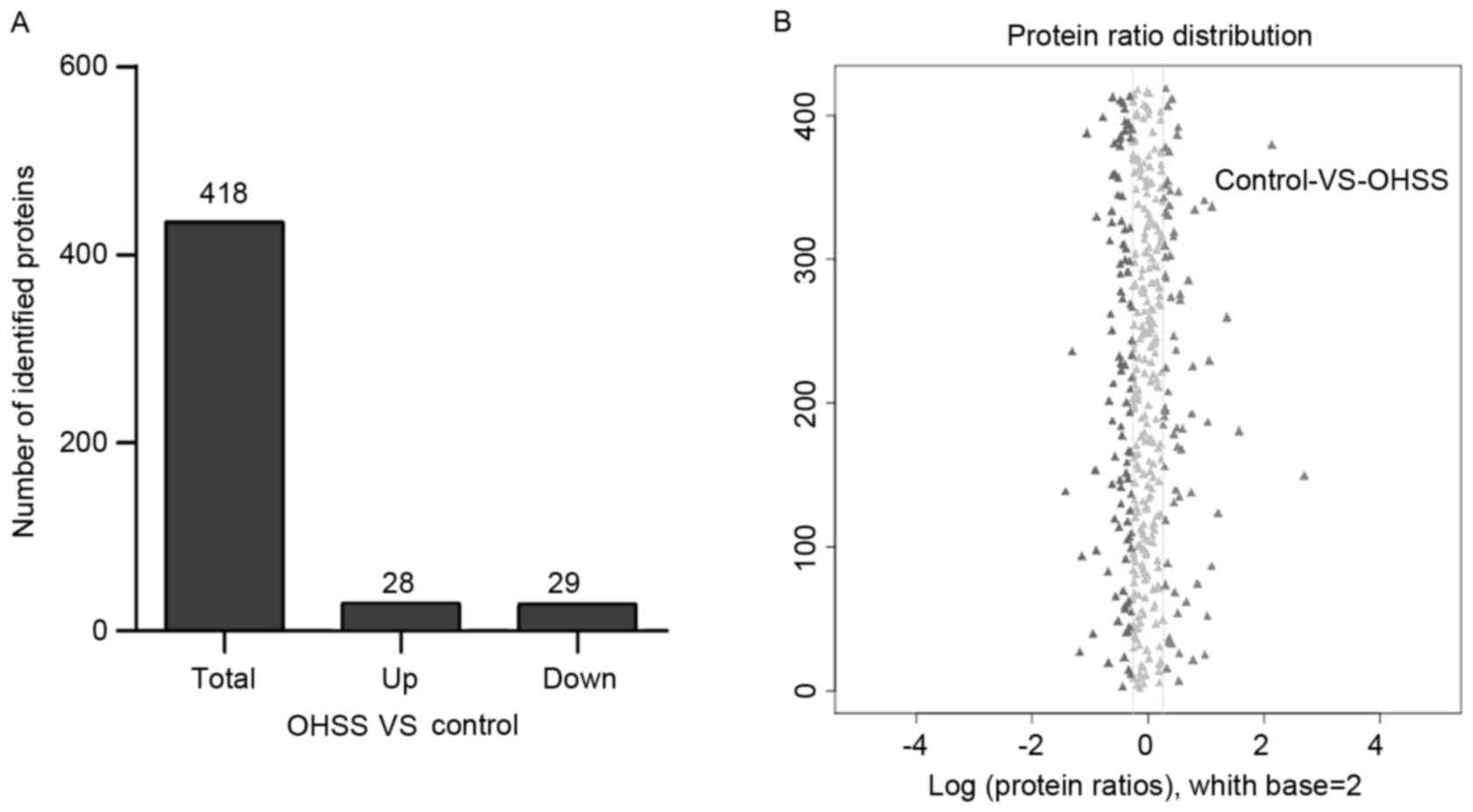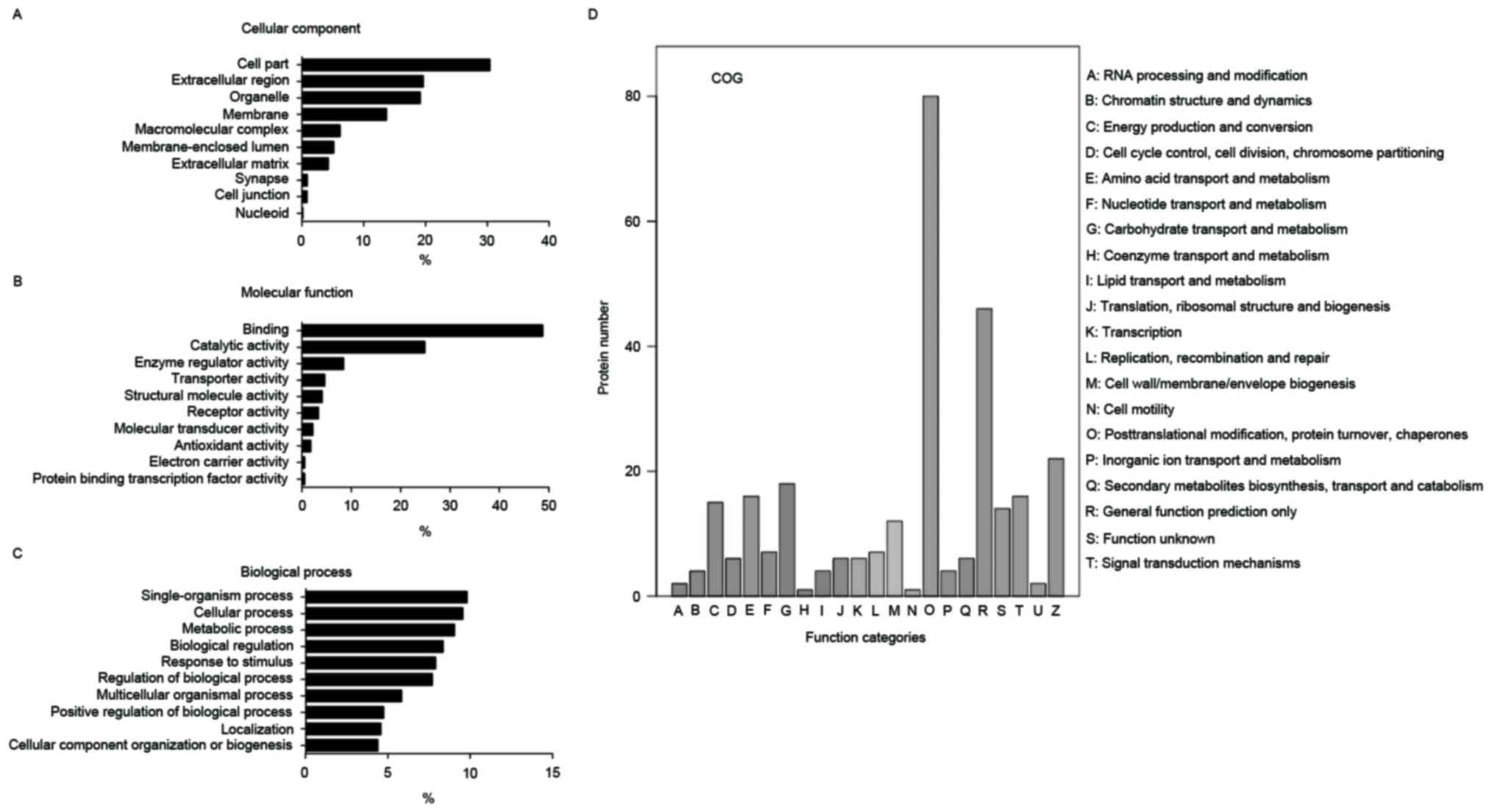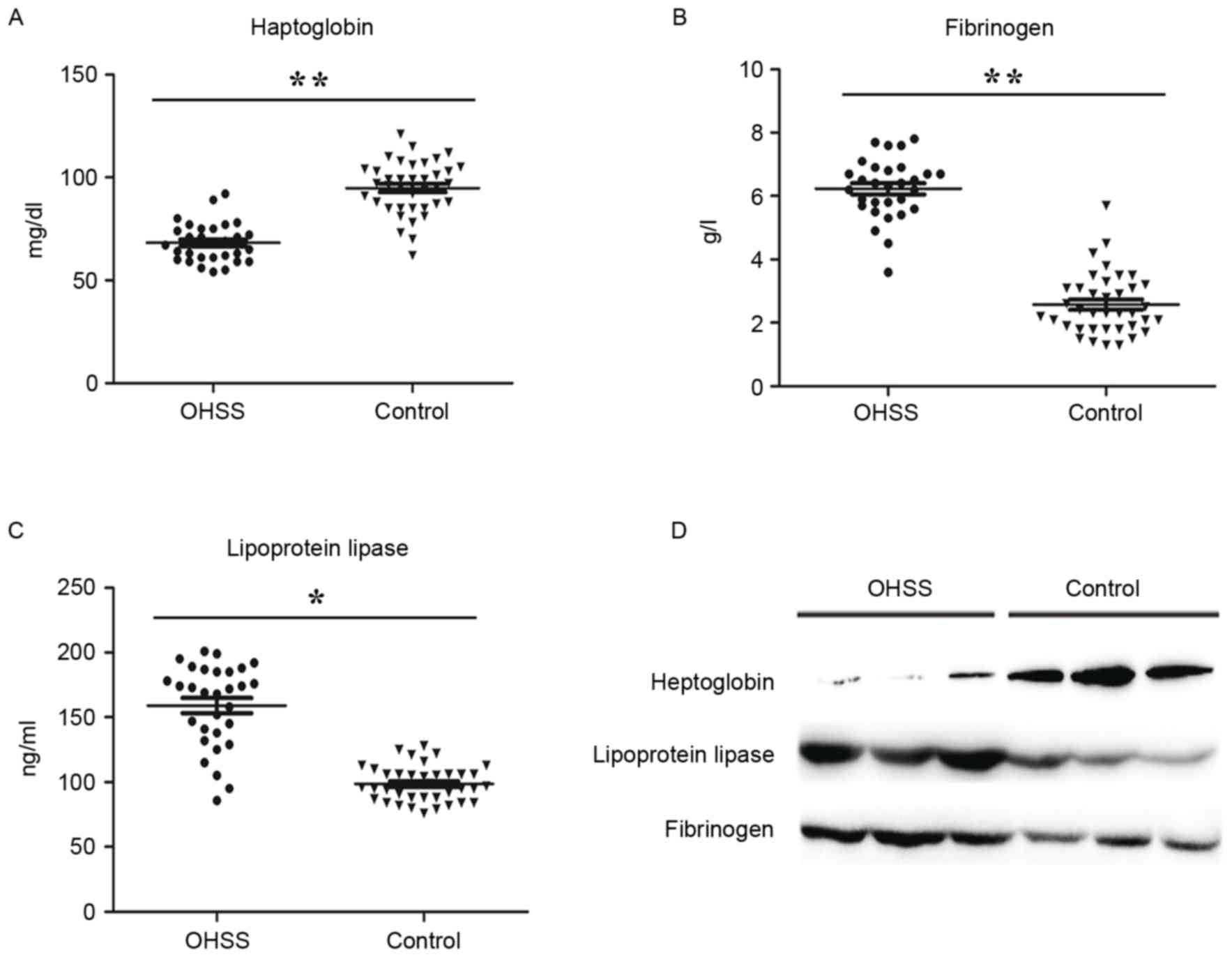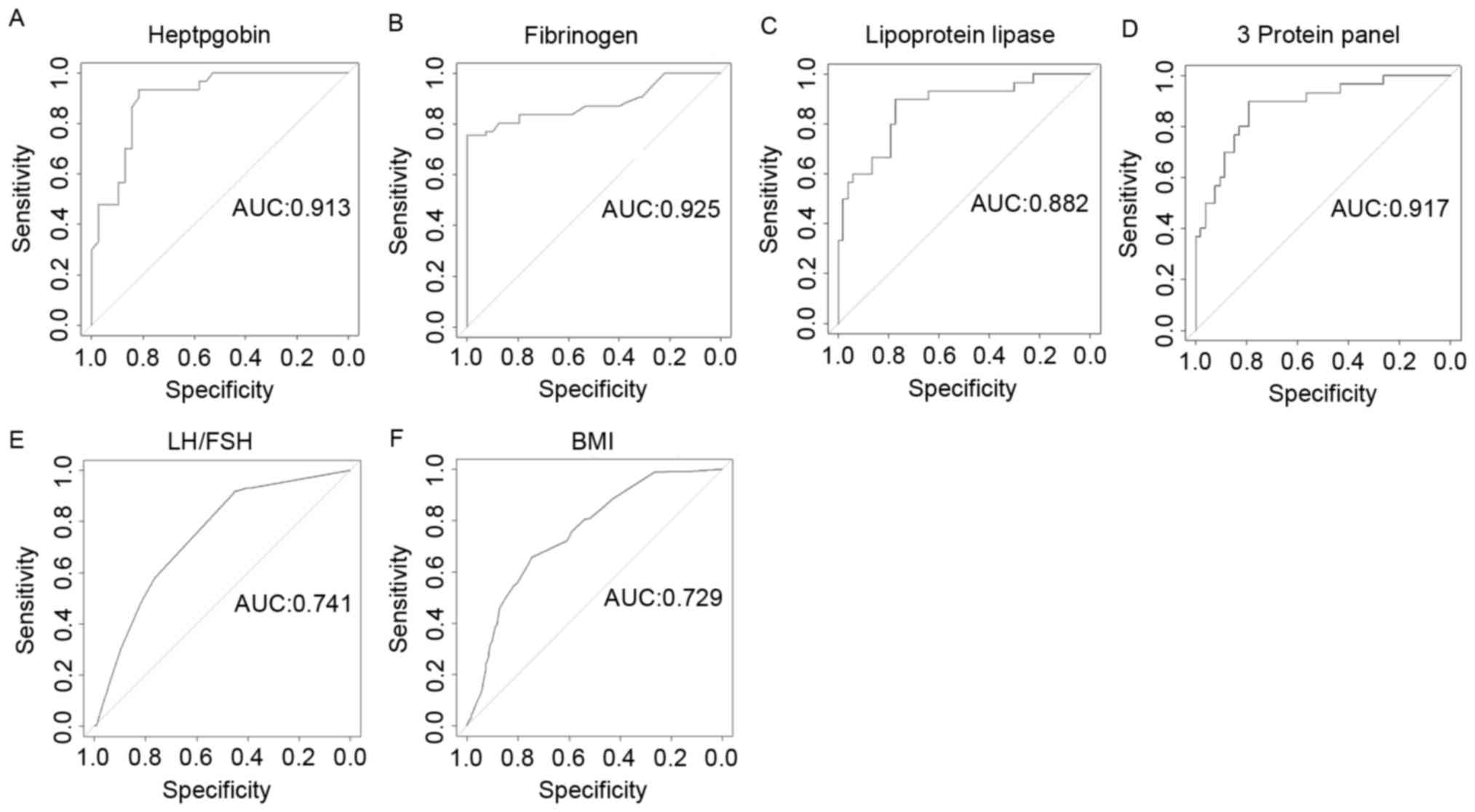|
1
|
Smith V, Osianlis T and Vollenhoven B:
Prevention of ovarian hyperstimulation syndrome: A review. Obstet
Gynecol Int. 2015:5141592015. View Article : Google Scholar : PubMed/NCBI
|
|
2
|
Nastri CO, Teixeira DM, Moroni RM, Leitão
VM and Martins WP: Ovarian hyperstimulation syndrome: Patho
physiology, staging, prediction and prevention. Ultrasound Obstet
Gynecol. 45:377–393. 2015. View Article : Google Scholar : PubMed/NCBI
|
|
3
|
Kumar P, Sait SF, Sharma A and Kumar M:
Ovarian hyperstimulation syndrome. J Hum Reprod Sci. 4:70–75. 2011.
View Article : Google Scholar : PubMed/NCBI
|
|
4
|
Sukul SP, Pekelharing JE, van Hooff MH,
van der Weiden RM and van Asten JC: Thrombosis in ovarian
hyperstimulation syndrome. Ned Tijdschr Geneeskd. 158:A71082014.(In
Dutch). PubMed/NCBI
|
|
5
|
Halupczok J, Kluba-Szyszka A,
Bidzińska-Speichert B and Knychalski B: Ovarian hyperstimulation
caused by gonadotroph pituitary adenoma-review. Adv Clin Exp Med.
24:695–703. 2015. View Article : Google Scholar : PubMed/NCBI
|
|
6
|
Nouri K, Tempfer CB, Lenart C,
Windischbauer L, Walch K, Promberger R and Ott J: Predictive
factors for recovery time in patients suffering from severe OHSS.
Reprod Biol Endocrinol. 12:592014. View Article : Google Scholar : PubMed/NCBI
|
|
7
|
Guo JL, Zhang DD, Zhao Y, Zhang D, Zhang
XM, Zhou CQ and Yao SZ: Pharmacologic interventions in preventing
ovarian hyperstimulation syndrome: A systematic review and network
meta-analysis. Sci Rep. 6:190932016. View Article : Google Scholar : PubMed/NCBI
|
|
8
|
Miller I, Chuderland D, Ron-El R, Shalgi R
and Ben-Ami I: GnRH agonist triggering modulates PEDF to VEGF ratio
inversely to hCG in granulosa cells. J Clin Endocrinol Metab.
100:E1428–E1436. 2015. View Article : Google Scholar : PubMed/NCBI
|
|
9
|
Ingman WV and Robertson SA: Transforming
growth factor-beta1 null mutation causes infertility in male mice
associated with testosterone deficiency and sexual dysfunction.
Endocrinology. 148:4032–4043. 2007. View Article : Google Scholar : PubMed/NCBI
|
|
10
|
Herr D, Bekes I and Wulff C: Local
renin-angiotensin system in the reproductive system. Front
Endocrinol (Lausanne). 4:1502013.PubMed/NCBI
|
|
11
|
Ashrafi M, Bahmanabadi A, Akhond MR and
Arabipoor A: Predictive factors of early moderate/severe ovarian
hyper stimulation syndrome in non-polycystic ovarian syndrome
patients: A statistical model. Arch Gynecol Obstet. 292:1145–1152.
2015. View Article : Google Scholar : PubMed/NCBI
|
|
12
|
Ocal P, Sahmay S, Cetin M, Irez T, Guralp
O and Cepni I: Serum anti-Müllerian hormone and antral follicle
count as predictive markers of OHSS in ART cycles. J Assist Reprod
Genet. 28:1197–1203. 2011. View Article : Google Scholar : PubMed/NCBI
|
|
13
|
Markel G, Imazio M, Koren-Morag N,
Galore-Haskel G, Schachter J, Besser M, Cumetti D, Maestroni S,
Altman A, Shoenfeld Y, et al: CEACAM1 and MICA as novel serum
biomarkers in patients with acute and recurrent pericarditis.
Oncotarget. 7:17885–17895. 2016.PubMed/NCBI
|
|
14
|
Xu D, Li Y, Li X, Wei LL, Pan Z, Jiang TT,
Chen ZL, Wang C, Cao WM, Zhang X, et al: Serum protein S100A9,
SOD3, and MMP9 as new diagnostic biomarkers for pulmonary
tuberculosis by iTRAQ-coupled two-dimensional LC-MS/MS. Proteomics.
15:58–67. 2015. View Article : Google Scholar : PubMed/NCBI
|
|
15
|
Palioura E and Diamanti-Kandarakis E:
Polycystic ovary syndrome (PCOS) and endocrine disrupting chemicals
(EDCs). Rev Endocr Metab Disord. 16:365–371. 2015. View Article : Google Scholar : PubMed/NCBI
|
|
16
|
Golan A and Weissman A: Symposium: Update
on prediction and management of OHSS. A modern classification of
OHSS. Reprod Biomed Online. 19:28–32. 2009. View Article : Google Scholar : PubMed/NCBI
|
|
17
|
Nhi DM, Huy NT, Ohyama K, Kimura D, Lan
NT, Uchida L, Thuong NV, Nhon CT, le Phuc H, Mai NT, et al: A
proteomic approach identifies candidate early biomarkers to predict
severe dengue in children. PLoS Negl Trop Dis. 10:e00044352016.
View Article : Google Scholar : PubMed/NCBI
|
|
18
|
Zhang Y, Kang Y, Zhou Q, Zhou J, Wang H,
Jin H, Liu X, Ma D and Li X: Quantitative proteomic analysis of
serum from pregnant women carrying a fetus with conotruncal heart
defect using isobaric tags for relative and absolute quantitation
(iTRAQ) labeling. PLoS One. 9:e1116452014. View Article : Google Scholar : PubMed/NCBI
|
|
19
|
Chen L, Gu H, Li J, Yang ZY, Sun X, Zhang
L, Shan L, Wu L, Wei X, Zhao Y, et al: Comprehensive maternal serum
proteomics identifies the cytoskeletal proteins as non-invasive
biomarkers in prenatal diagnosis of congenital heart defects. Sci
Rep. 6:192482016. View Article : Google Scholar : PubMed/NCBI
|
|
20
|
Ezeh U, Yildiz BO and Azziz R: Referral
bias in defining the phenotype and prevalence of obesity in
polycystic ovary syndrome. J Clin Endocrinol Metab. 98:E1088–E1096.
2013. View Article : Google Scholar : PubMed/NCBI
|
|
21
|
Ezcurra D and Humaidan P: A review of
luteinising hormone and human chorionic gonadotropin when used in
assisted reproductive technology. Reprod Biol Endocrinol.
12:952014. View Article : Google Scholar : PubMed/NCBI
|
|
22
|
Lehert P, Kolibianakis EM, Venetis CA,
Schertz J, Saunders H, Arriagada P, Copt S and Tarlatzis B:
Recombinant human follicle-stimulating hormone (r-hFSH) plus
recombinant luteinizing hormone versus r-hFSH alone for ovarian
stimulation during assisted reproductive technology: Systematic
review and meta-analysis. Reprod Biol Endocrinol. 12:172014.
View Article : Google Scholar : PubMed/NCBI
|
|
23
|
Peluso C, Fonseca FL, Gastaldo GG,
Christofolini DM, Cordts EB, Barbosa CP and Bianco B: AMH and AMHR2
polymorphisms and AMH serum level can predict assisted reproduction
outcomes: A cross-sectional study. Cell Physiol Biochem.
35:1401–1412. 2015. View Article : Google Scholar : PubMed/NCBI
|
|
24
|
Salmassi A, Mettler L, Hedderich J, Jonat
W, Deenadayal A, von Otte S, Eckmann-Scholz C and Schmutzler AG:
Cut-off levels of anti-mullerian hormone for the prediction of
ovarian response, in vitro fertilization outcome and ovarian
hyperstimulation syndrome. Int J Fertil Steril. 9:157–167.
2015.PubMed/NCBI
|
|
25
|
Sam S: Adiposity and metabolic dysfunction
in polycystic ovary syndrome. Horm Mol Biol Clin Investig.
21:107–116. 2015.PubMed/NCBI
|
|
26
|
Carreau AM and Baillargeon JP: PCOS in
adolescence and type 2 diabetes. Curr Diab Rep. 15:5642015.
View Article : Google Scholar : PubMed/NCBI
|
|
27
|
Polyzos SA, Kountouras J, Deretzi G, Zavos
C and Mantzoros CS: The emerging role of endocrine disruptors in
pathogenesis of insulin resistance: A concept implicating
nonalcoholic fatty liver disease. Curr Mol Med. 12:68–82. 2012.
View Article : Google Scholar : PubMed/NCBI
|
|
28
|
Alonso-Magdalena P, Quesada I and Nadal A:
Endocrine disruptors in the etiology of type 2 diabetes mellitus.
Nat Rev Endocrinol. 7:346–353. 2011. View Article : Google Scholar : PubMed/NCBI
|
|
29
|
Levy AP, Asleh R, Blum S, Levy NS,
Miller-Lotan R, Kalet-Litman S, Anbinder Y, Lache O, Nakhoul FM,
Asaf R, et al: Haptoglobin: Basic and clinical aspects. Antioxid
Redox Signal. 12:293–304. 2010. View Article : Google Scholar : PubMed/NCBI
|
|
30
|
Orvieto R, Dratviman-Storobinsky O,
Lantsberg D, Haas J, Mashiach R and Cohen Y: Interleukin-2 and
SOCS-1 proteins involvement in the pathophysiology of severe
ovarian hyperstimulation syndrome-a preliminary proof of concept. J
Ovarian Res. 7:1062014. View Article : Google Scholar : PubMed/NCBI
|
|
31
|
Elliott BM and Aledort LM: Restoring
hemostasis: Fibrinogen concentrate versus cryoprecipitate. Expert
Rev Hematol. 6:277–286. 2013. View Article : Google Scholar : PubMed/NCBI
|
|
32
|
Wang S, Moustaid-Moussa N, Chen L, Mo H,
Shastri A, Su R, Bapat P, Kwun I and Shen CL: Novel insights of
dietary polyphenols and obesity. J Nutr Biochem. 25:1–18. 2014.
View Article : Google Scholar : PubMed/NCBI
|
|
33
|
Chistyakova GN, Remizova II, Gazieva IA
and Chermyaninova OV: Immunological and hemostasiological disorders
in women with ovarian hyperstimulation syndrome. Gynecol
Endocrinol. 30:(Suppl 1). S39–S42. 2014. View Article : Google Scholar
|
|
34
|
Olivecrona G: Role of lipoprotein lipase
in lipid metabolism. Curr Opin Lipidol. 27:233–241. 2016.
View Article : Google Scholar : PubMed/NCBI
|













